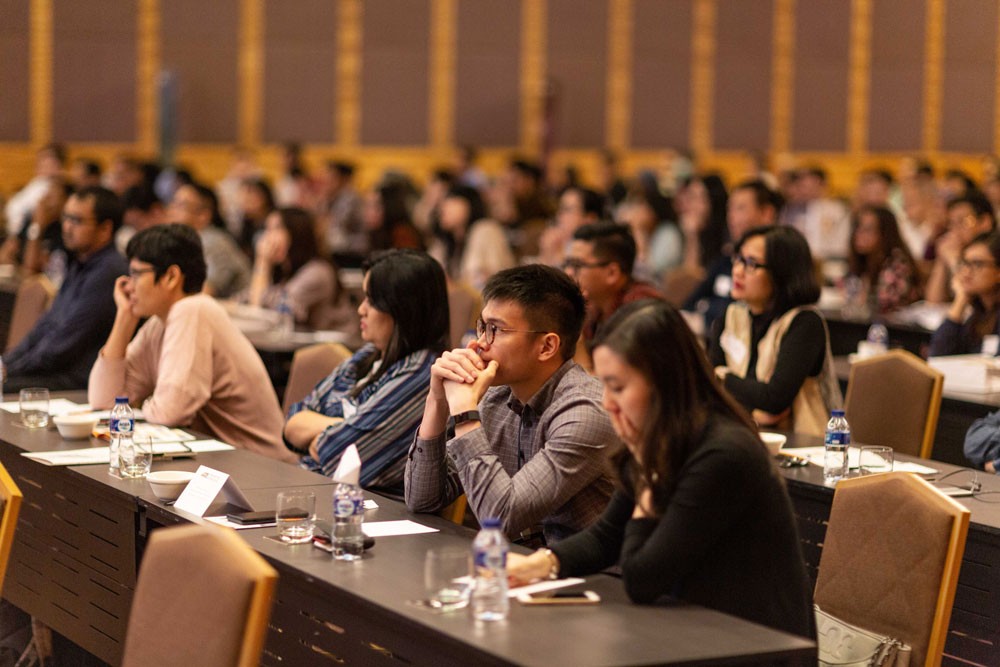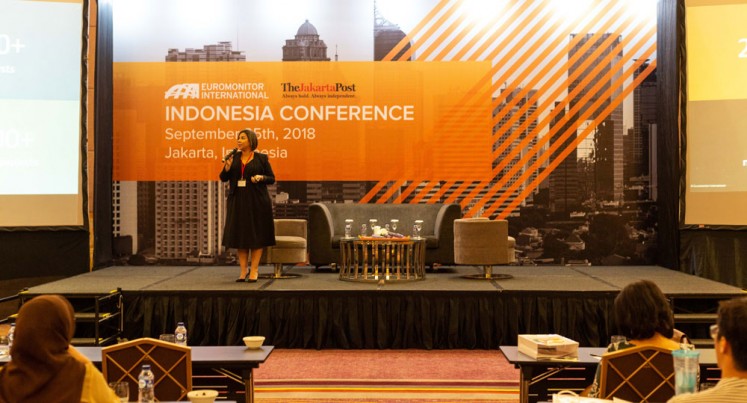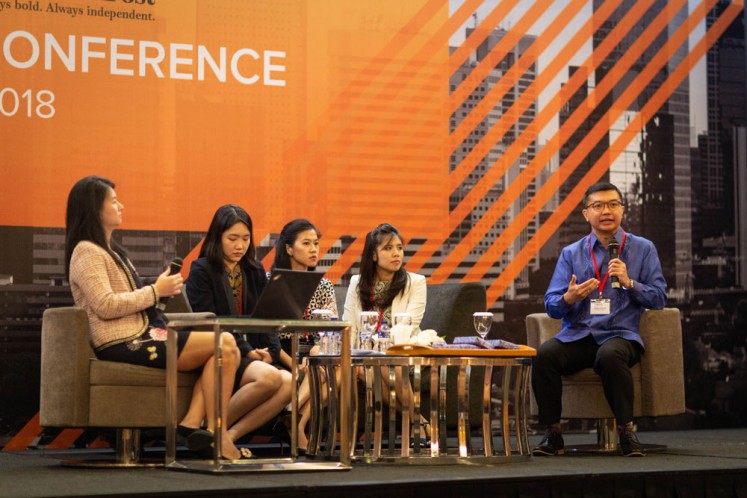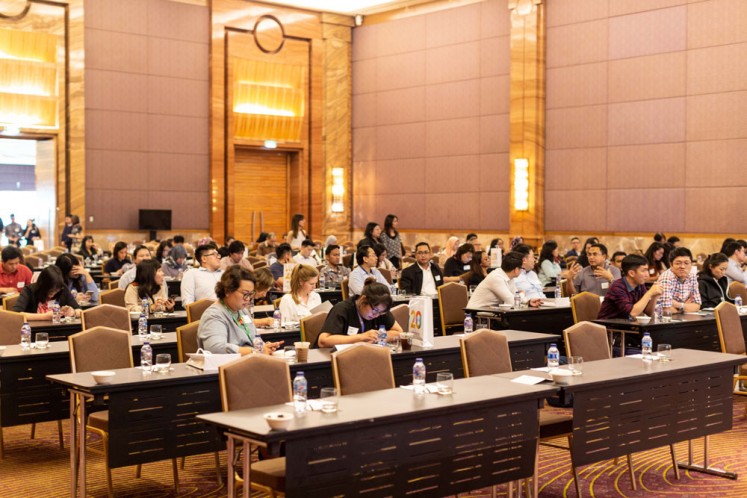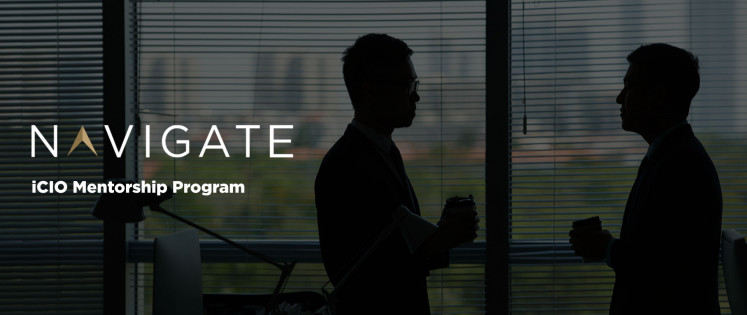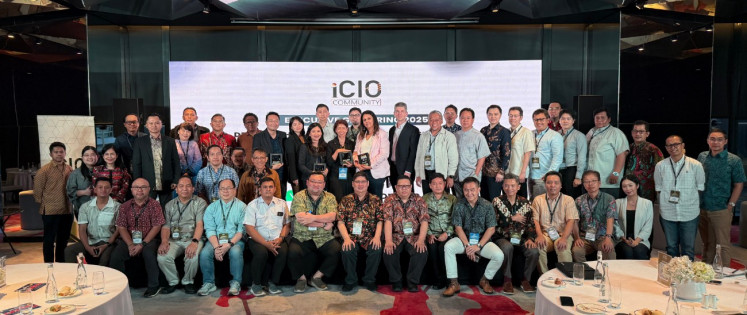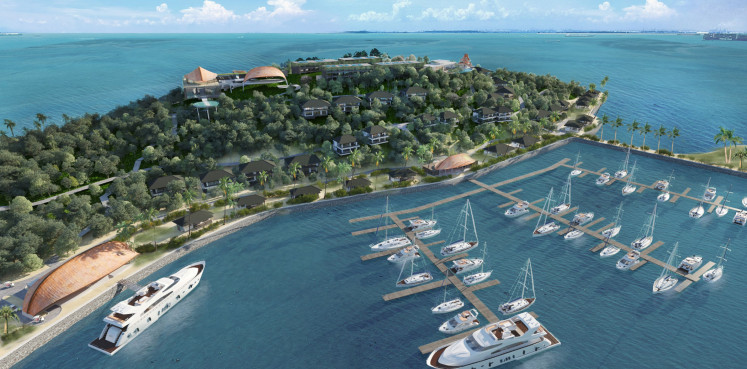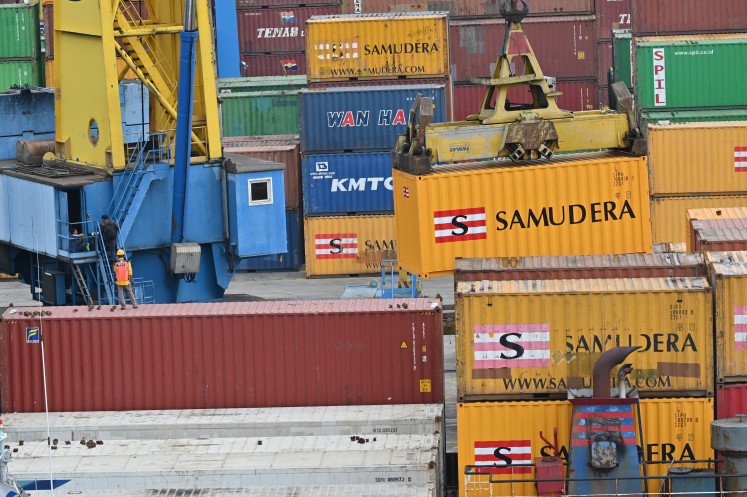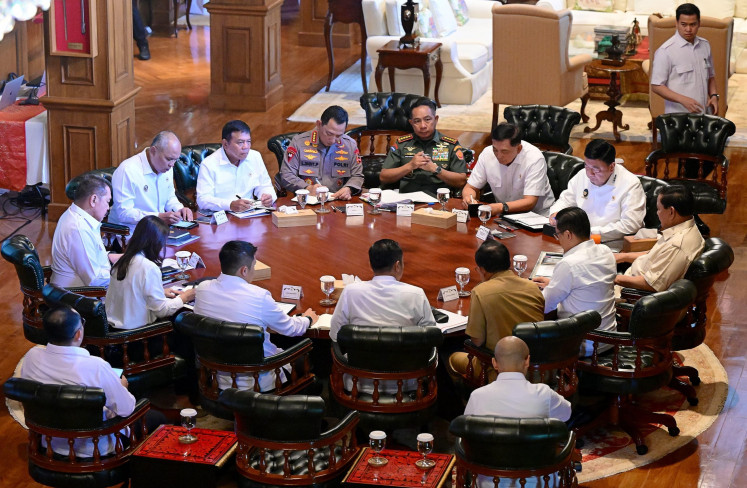Popular Reads
Top Results
Can't find what you're looking for?
View all search resultsPopular Reads
Top Results
Can't find what you're looking for?
View all search resultsIndonesia to see more fragmented competition in FMCG: Euromonitor
Change text size
Gift Premium Articles
to Anyone
I
ndonesia constitutes 40 percent of Southeast Asia’s total population of 664 million people. With relatively young and productive individuals currently comprising the biggest demographics in Indonesia, the country has a growing base of captive consumers for fast-moving consumer goods (FMCG) in the Southeast Asia region.
Therefore, Indonesia is an extremely important market for the FMCG sector within the Southeast Asian region. Within the past five years, Indonesia’s macroeconomic indicators have showcased a healthy growth, continuously growing healthily right up to the second quarter of 2018. With this trend, consumer expenditure is still projected to grow in 2018, with approximately 5 percent growth in real terms.
Recognizing the importance of understanding the patterns of Indonesian consumption habits, global market research firm Euromonitor International has recently issued a report detailing the country’s consumer behavior.
Growing services industry
From its analysis, Euromonitor International has found that in 2017, Indonesian consumers spent around Rp 2,700 trillion on products and services, representing a 4 percent year-on-year growth rate in the 2012 to 2017 period. In 2017, the firm also found that packaged foods, beverages and tobacco products constituted Indonesian consumers’ biggest grocery expenditures, accounting for more than a third of their total spending amount throughout 2017.
Besides spending their money on these products, which is quite common among Indonesians, however, the firm also discovered an interesting new trend: consumers spent as much money on the travel and food hospitality service categories as they did on the packaged food, beverages and tobacco categories in 2017.
The firm also predicted that travel and food hospitality services will continue to grow in the years to come, surpassing consumer spending on packaged food, beverages and tobacco combined, as Indonesian consumers get keener to gain life experiences that different destinations have to offer through traveling.
Digital platforms stimulate competition
Indonesia’s digital landscape is evolving with more people owning mobile devices. Around 58 percent of the Indonesian population currently uses mobile phones, according to Euromonitor International’s 2018 data. The mobile service provider subscription rate among Indonesians, meanwhile, surpasses its population number, meaning that most Indonesians subscribe to more than just one mobile provider.
Put into a global context, currently Indonesia is home to the third-largest number of mobile subscribers globally, with India and China ranking first and second on the list, while surpassing developed countries such as the United States (number four) and Japan (number five) in terms of mobile subscription rate.
In terms of social impact, pervasive mobile services subscription in Indonesia has allowed its people to get more exposure to various product and service trends across local, regional and global settings. This increased awareness of global trends has also been helped by the avid adoption of social media platforms among Indonesians: in 2017, over 280 million Indonesians had either a Facebook or Instagram account; they also used video platform YouTube frequently.
Indonesians have increasingly been using social media postings as important social currency, for as individuals as well as community members.
The pervasive adoption of various social media platforms among Indonesians has also altered their purchasing decisions, shaping their consumerism in a slightly different way. Currently, social media postings have become an increasingly important element among Indonesians upon deciding which product and service to buy.
The penetration of digital devices, as well as the way they enhance consumer behavior, has created a more fragmented competitive landscape across providers of both products and services, increasing domestic consumers’ exposure to various domestic and international brands. Unlike how brands used to work just a couple of years ago, now companies and brands can directly reach consumers from different parts of the world, including Indonesia, through these platforms.
Future business prospects by emerging middle class
Euromonitor International is projecting a positive economic outlook for Indonesia and the Southeast Asian region in general. The firm predicts that Southeast Asia will grow by around 5 percent by 2030 despite ongoing global uncertainty, which has fortunately been offset by the region’s dominant and ever-increasing middle class households, serving as the region’s key economic catalyst.
As a matter of fact, there will be 60 million middle class households in Southeast Asia by 2030 and Indonesia will account for almost 40 percent of them. The households will have the biggest resources and expendable income to spend, while seeking to craft more sophisticated lifestyles – marked by frequent travels – for themselves. Therefore, Indonesia has an economic opportunity big enough for its Southeast Asian peers to tap into.

